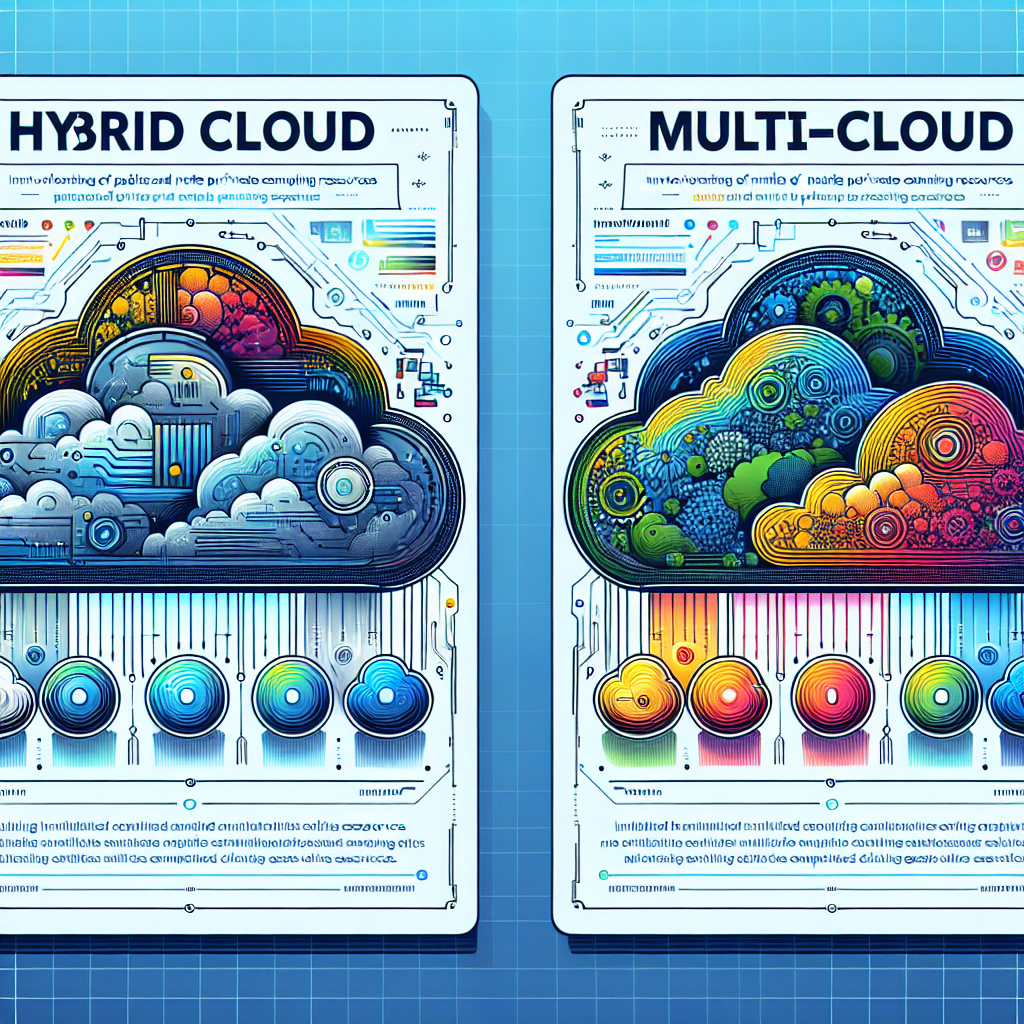In today’s digital landscape, businesses are increasingly turning to cloud computing to enhance their operations and drive innovation. Two popular cloud deployment models that have gained traction in recent years are hybrid cloud and multi-cloud. While both offer numerous benefits, there are key differences between the two that businesses need to understand in order to make the right choice for their unique needs.
Hybrid Cloud:
Hybrid cloud is a combination of on-premises infrastructure, private cloud, and public cloud services. This model allows businesses to leverage the scalability and flexibility of public cloud services while keeping sensitive data and critical applications on-premises or in a private cloud environment. By using a hybrid cloud approach, organizations can optimize their infrastructure, improve performance, and enhance security.
Key characteristics of hybrid cloud include:
– Flexibility: Businesses can scale resources up or down based on demand, making it easier to handle fluctuating workloads.
– Security: By keeping sensitive data on-premises or in a private cloud, organizations can maintain greater control over their data and comply with industry regulations.
– Cost-effectiveness: Companies can save costs by using public cloud services for non-sensitive workloads and on-premises resources for critical applications.
Multi-Cloud:
Multi-cloud, on the other hand, refers to the use of multiple cloud services from different providers. This model allows businesses to avoid vendor lock-in and take advantage of the unique features and pricing structures offered by various cloud providers. By adopting a multi-cloud strategy, organizations can prevent service disruptions, improve resilience, and optimize performance.
Key characteristics of multi-cloud include:
– Redundancy: By distributing workloads across multiple cloud providers, businesses can reduce the risk of downtime and ensure high availability.
– Flexibility: Organizations can choose the best cloud services for each application or workload, optimizing performance and cost-efficiency.
– Innovation: By leveraging multiple cloud providers, businesses can access a wider range of services and features, enabling them to drive innovation and stay ahead of the competition.
Understanding the Key Differences:
While hybrid cloud and multi-cloud share some similarities, such as the ability to scale resources and improve flexibility, there are key differences that businesses need to consider when deciding between the two models.
Hybrid cloud is ideal for organizations that require a balance between security and scalability, as it allows them to keep sensitive data on-premises while taking advantage of the benefits of public cloud services. On the other hand, multi-cloud is better suited for businesses that want to avoid vendor lock-in and optimize performance by leveraging the strengths of multiple cloud providers.
Ultimately, the choice between hybrid cloud and multi-cloud will depend on a variety of factors, including the organization’s security requirements, budget constraints, and long-term business goals. By understanding the key differences between these two cloud deployment models, businesses can make an informed decision that aligns with their unique needs and objectives.


Leave a Reply